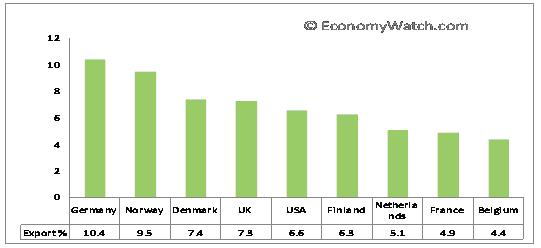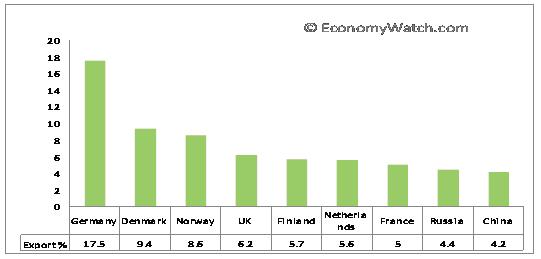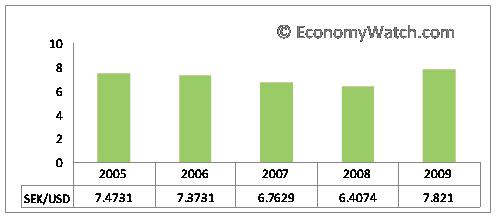Sweden Trade, Exports and Imports
Please note that we are not authorised to provide any investment advice. The content on this page is for information purposes only.
In January 2010, Swedish exports amounted to SEK 78.4 billion, while imports amounted to SEK 70.9 billion. The country’s net trade surplus was SEK 7.5 billion. Sweden’s trade, exports and imports are dependent on the nation’s highly industrialized setup and exports to other Scandinavian nations and the rest of Europe. The surplus for January 2009 was SEK 6.9 billion. Compared to January 2009, exports increased by 1%, while imports more or less remained the same. Trade with other countries had a surplus of SEK 8.2 billion, while EU trade resulted in a deficit of SEK 0.7 billion. The net surplus of January 2010 was higher than December 2009 figures of SEK 6.4 billion. The November 2009 surplus amounted to SEK 6.3 billion.[br]
During the period from November 2009-January 2010, the value of exports decreased by 2%. Exports amounted to SEK 233.3 billion, resulting in a surplus net trade balance of SEK 14.5 billion for November 2009 – January 2010.The surplus for November 2008-January 2009 was SEK 19.1 billion.
Sweden Trade: Exports and Imports
Sweden’s primary export commodities include industrial machinery, automobiles, paper products, iron and steel products, pulp and wood, and chemicals. The following chart shows the distribution of Sweden’s export partners. All data are in percentages.

Sweden’s primary import commodities include machinery, petroleum and petroleum products, chemicals, motor vehicles, iron and steel; foodstuffs, clothing. The following chart shows the distribution of Sweden’s import partners. All data are in percentages.
Sweden’s currency is Swedish Kronor (SEK). The next chart shows Sweden’s exchange rates from 2005-2009 with respect to US Dollar.






